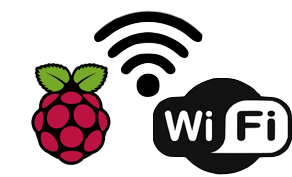
Most Raspberry Pi over Wi-Fi tutorials (including my own) assume you’ll be working over a home Wi-Fi network that simply requires a single password for access, but what if you’re at a University or other organization where both a userID and password are required for Wi-Fi access?
Use a Mobile Phone as a Hotspot
For those who struggle even after trying options below, remember you can always use a mobile device as a hotspot.
- Apple’s Setup guide for iPhone users
-
Techcoil’s How to connect your Raspberry Pi to your iPhone WiFi hotspot via Raspbian Stretch Lite
Configuring a Pi on a Campus or Enterprise Wi-Fi Network
Unfortunately there’s not a single solution here. Each network can be different. Even among Universities that use shared eduroam authentication, the specifics of device approval on networks is left up to the institutions. For example, at my institution, Boston College, anyone wanting to add a smart device like a Pi or Amazon Echo is asked to supply the device’s MAC Address (here’s how to find your Pi’s MAC and IP addresses). BUT this implies you can already connect your Pi to the network to get your MAC address. If this is the situation that you’re facing then here’s a step-by-step guide on how to configure a Pi using it’s USB port so that you can login, get the Mac address, then set up the Wi-Fi network.
Most Pi users will want to edit their Pi’s wpa_supplicant.conf file with network information. Boston College’s security procedures specifically assume you won’t be able to share your userID and password from a smart device, so you just need to configure the file as indicated in the step-by-step guide, above. If you’re configuring on a network that requires some other combination of credentials, you’ll find additional examples that you can try on your network – usually requiring you to change fields below:
ssid="WI-FI_NAME_HERE"identity="yourUsername@yourInstitution"
password="YOUR_PASSWORD_HERE"
Other fields may vary, as well. As an example, here is a file in a Gist example from Auburn., and here’s page for Cambridge University in the UK.
Jan Küster’s page offers more details on wpa_supplicant.conf configuration options.
Security
Also note that some of these techniques imply having your password in an unencrypted file on your Pi. If you’re concerned about hacking, there are steps to encrypt your Wi-Fi password on your Pi and several steps you can take to improve security on your Pi.
A Useful Tool
While you can interrogate your network from the command-line, I also like the LanScan tool for the Mac (there are free and paid/pro versions). It shows all devices on your network, IP addresses, MAC addresses, product vendor, and much more.
